Knowing where to start with plant identification is sometimes tricky, but with some local knowledge and manageable portions, it’s completely achievable. I recall learning key weed species 15 years ago when I first joined the industry, and as anyone who has ever learnt weeds will tell you, strolling through the bush was never quite the same again. The sheer diversity of weeds can initially be overwhelming, but once you get a handle on them and understand their nature, they become slightly less recalcitrant and easier to manage.
The same can be said for learning new native plants. With thousands of species in SEQ, the prospect of knowing each one by name can be daunting. However, if you break this down into bite-sized parcels, it can be manageable. There are many techniques for learning and recalling plant names – you might sing a song, have a funny phrase or simply be gifted with a great memory. There are also great reference books, apps and knowledgeable people to help fine-tune your botanical skills. Of course, your Land for Wildlife Officer is always willing to help.
On a recent property visit, the gully we were in had all four species of native palms found on the Sunshine Coast (complete with feeding doves!). This snippet of local knowledge combined with the landholder’s intrigue encouraged me to write this article and hopefully inspire others on their native plant identification journey, starting with the palms of SEQ.
Bangalow or Picabeen Palm
(Archontophoenix cunninghamiana)
A tall and slender, single-stemmed, feather-leaved palm that gets its scientific name from the Greek word ‘archontos’ meaning chief and ‘phoenix’ referring to its majestic or graceful appearance. Leaf sheathes were used by Indigenous people to make containers called ‘piccies’ and it is likely that this is how this palm got its common name. The April 2016 LfWSEQ newsletter shows how to make a piccie. Young shoots from the crown can be eaten as a vegetable.
Picabeen Palms often grow in colonies along moist creek banks, gullies and wet or swampy forests. They grow to 25m tall, with a diameter of around 30cm and are single-stemmed. The length of the trunk is ringed with horizontal leaf scars. When in flower, they produce clusters of pink to pale lilac coloured flowers 1cm across. Fruit are a waxy orange-red when ripe. Both the flowers and fruit will often litter the forest floor – a great indicator to look up and see what else might be around…if you’re lucky you might spot a Wompoo Fruit-Dove feeding.
Lawyer Cane or Wait-a-while
(Calamus muelleri)
The majority of Australia’s palms have cylindrical, unbranched trunks and large fronds, with the exception of this genus. These climbing, spiny plants that resemble vines aren’t your ‘typical’ looking palms, but with their obvious fronds and tendrils, they are considered a climbing palm.
Anyone who has ever been caught up in one of these plants will understand the meaning of their common name. Sometimes forming impenetrable thickets in rainforest margins and clearings, their sharp spines will encourage you to walk a mile to get around it! If you do happen to get caught-up in one of their whip-like climbing structures (flagella), the recurved hooks relentlessly attach themselves to clothing, occasionally even grabbing the unsuspecting hat from your head. Be sure to walk backwards if you get caught.
Indigenous people used the canes and leaves to make baskets, fish nets and traps. The cane is still used today for craft and furniture. The impenetrable thickets and sharp spines of Lawyer Cane also make safe nesting sites for birds like the understorey-dwelling Yellow-throated Scrubwren.
Cabbage Tree Palm or Fan Palm
(Livistona australis)
Easily recognisable by its fan-leaf with drooping tips, it also has a ‘skirt’ of dead leaves underneath the crown. The petiole of the fronds also has a thorny row to be mindful of when handling. The single trunk has incomplete horizontal scars where the fronds have come away. It prefers growing in swampy or seasonally wet coastal environments. It is a prolific fruiter, with fruit that are red-brown in colour and densely clustered. Keep an eye out for fruit-loving birds, such as the Rose-crowned Fruit-Dove, eating these fruits.
This palm gets its common name from the edible growing bud at the top of the palm, being the ‘cabbage’. These cabbages were harvested by Indigenous people and the first colonists as part of their staple diet and have been described as having a spongy texture and sweet taste. In addition to being an important food source, it provided fibre for making string, rope, shelters, bags, baskets and fishing nets. Palm cabbages have been common in food production around the world but harvesting results in tree death and is somewhat unsustainable.
Walking Stick Palm
(Linospadix monostachya)
An understorey, single-stemmed, feather-leaved palm to around 3.5m tall and 2-3cm in diameter. It is not as common as the other palm species. This palm also has edible fruit when ripe. Its small green-cream flowers turn into long ‘strings’ of ripe, red acidic fruit – however eat with caution and be sure to have the correct species identification! They often grow in small colonies along stream banks and shaded areas and are tolerant to mild frost. Birds will feed on the fruit and Southern Angle-Headed Dragons have been observed camouflaging themselves on the trunk.
The long, slender stems were used by Indigenous people for fishing rods and the buds of the new shoots were eaten raw or cooked.
The slender trunk of this palm was used for walking sticks (and umbrella handles) in the 1800s. Large quantities were shipped to Europe, but by the 1900s they went out of fashion and shipping ceased. Demand increased again for walking sticks with the return of injured soldiers from the First World War.
References & further reading:
Harden G, et al (2017) Rainforest Plants of Australia App. LucidMobile.
Harden G, McDonald B & Williams J (2007) Rainforest Climbing Plants: A field guide to their identification. Gwen Harden Publishing.
Harden G, McDonald B & Williams J (2018) Rainforest Tree and Shrubs: A field guide to their identification. Gwen Harden Publishing.
Haslam S (2011) Noosa’s Native Plants. NICA.
Leiper G, Glazebrook J, Cox D & Rathie K (2017) Mangroves to Mountains: A field guide to the native plants of south-east Queensland. Logan River Branch SGAP.
Low T (1991) Wild Food Plants of Australia. Harper Collins.
Perrin D (1990) Dictionary of Botanical Names: Australian plants names, meaning, derivation and application. Don Perrin Publishing.
Article and photos by Kylie Gordon
Land for Wildlife Officer
Sunshine Coast Council

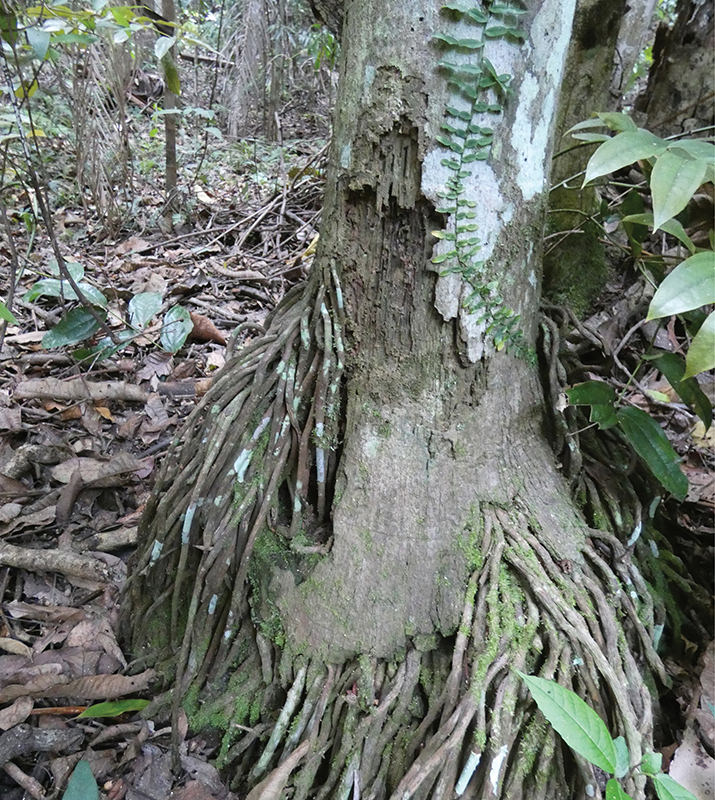
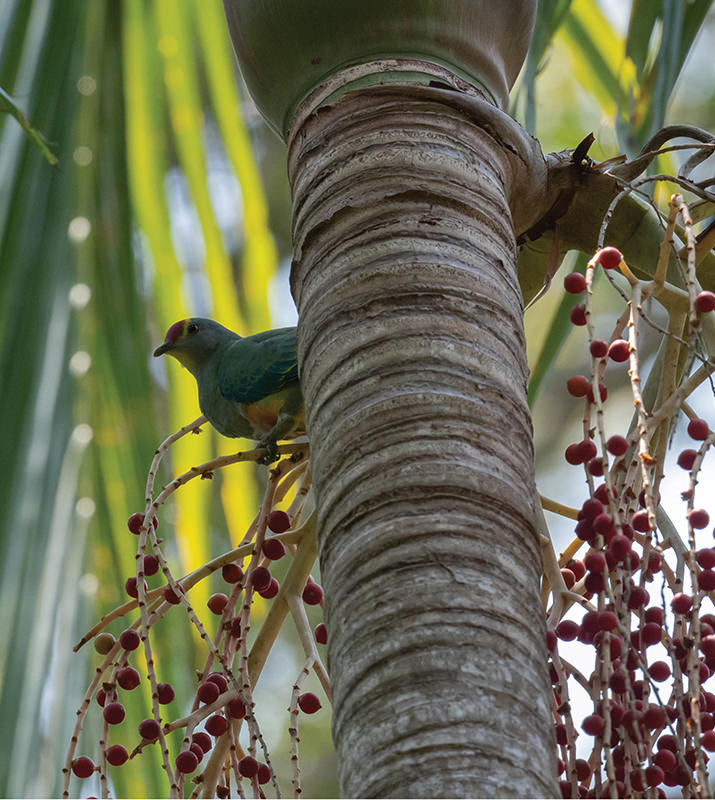
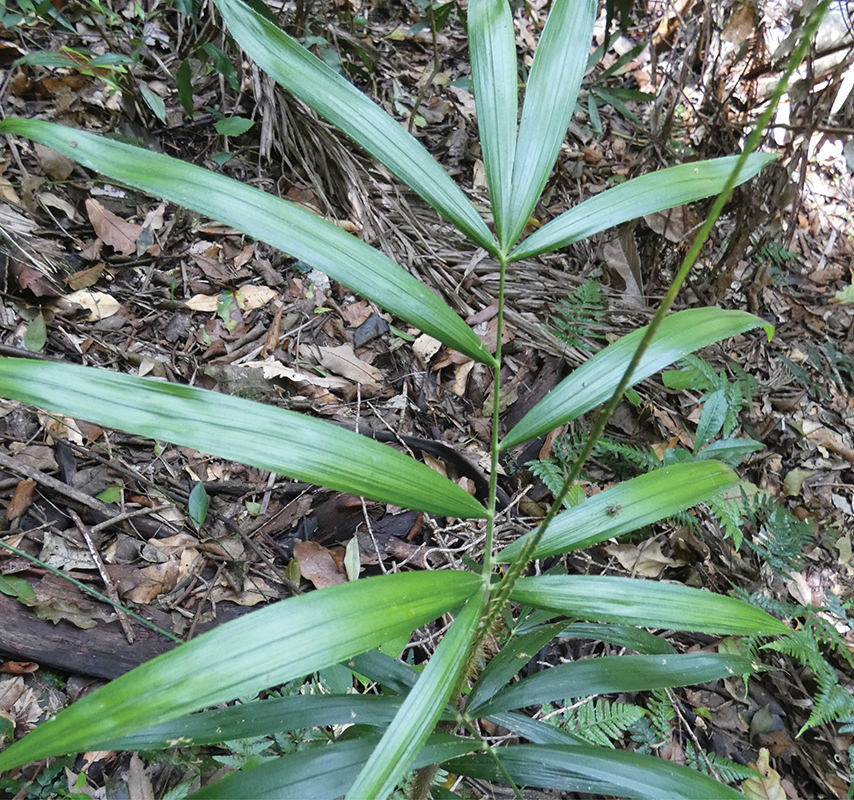
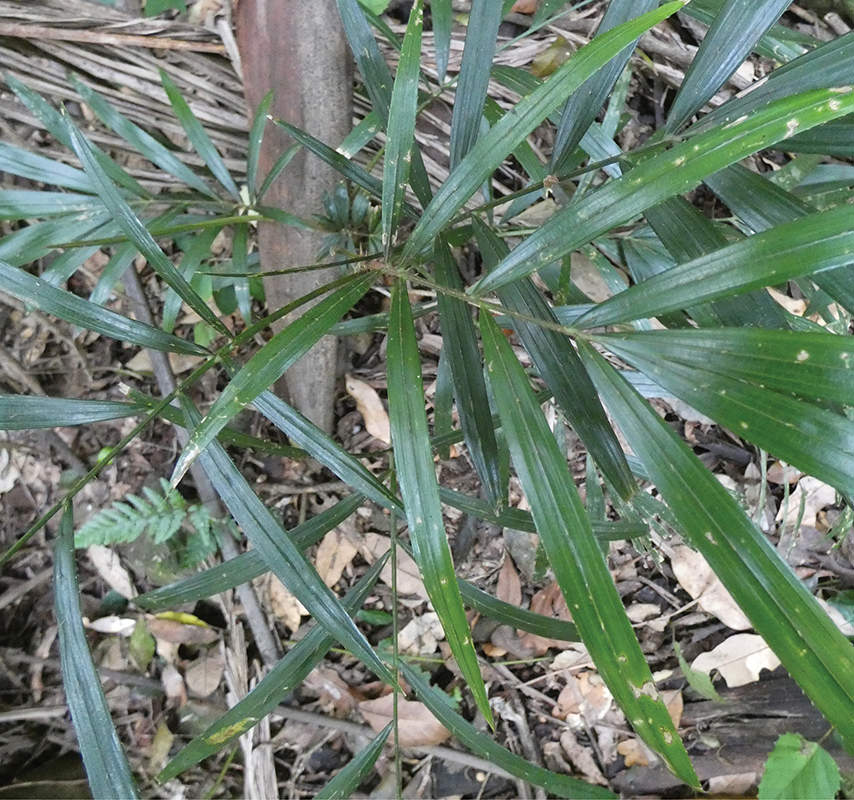
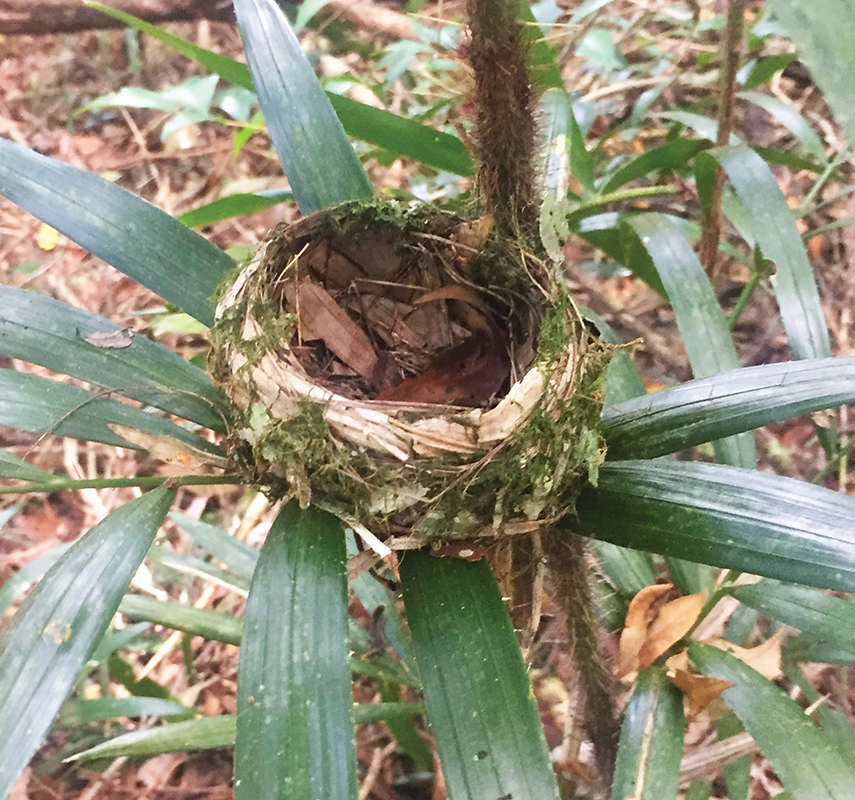
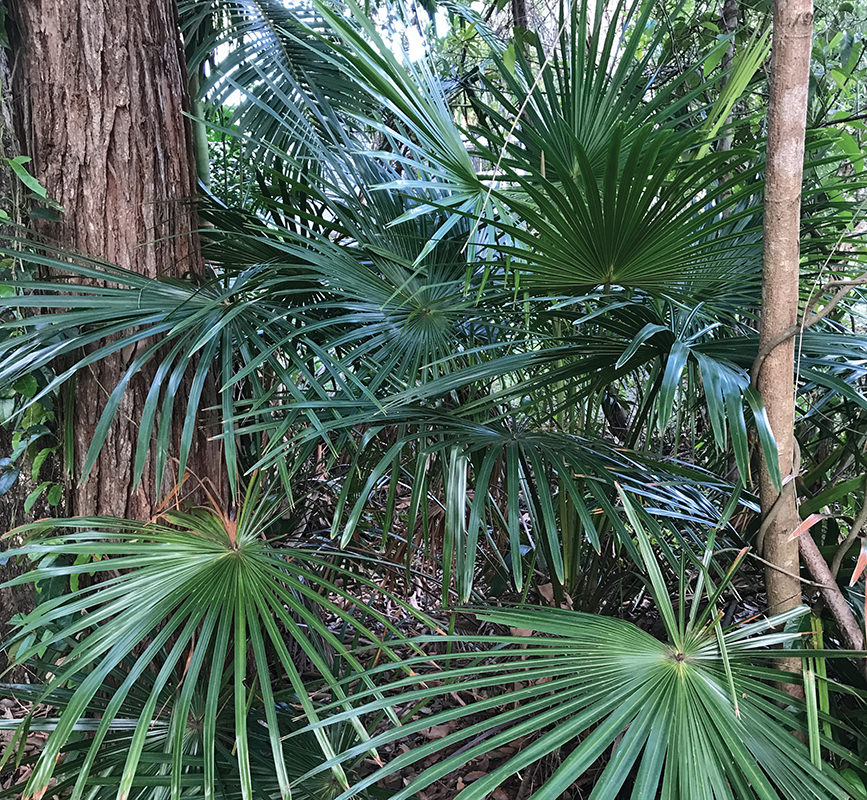
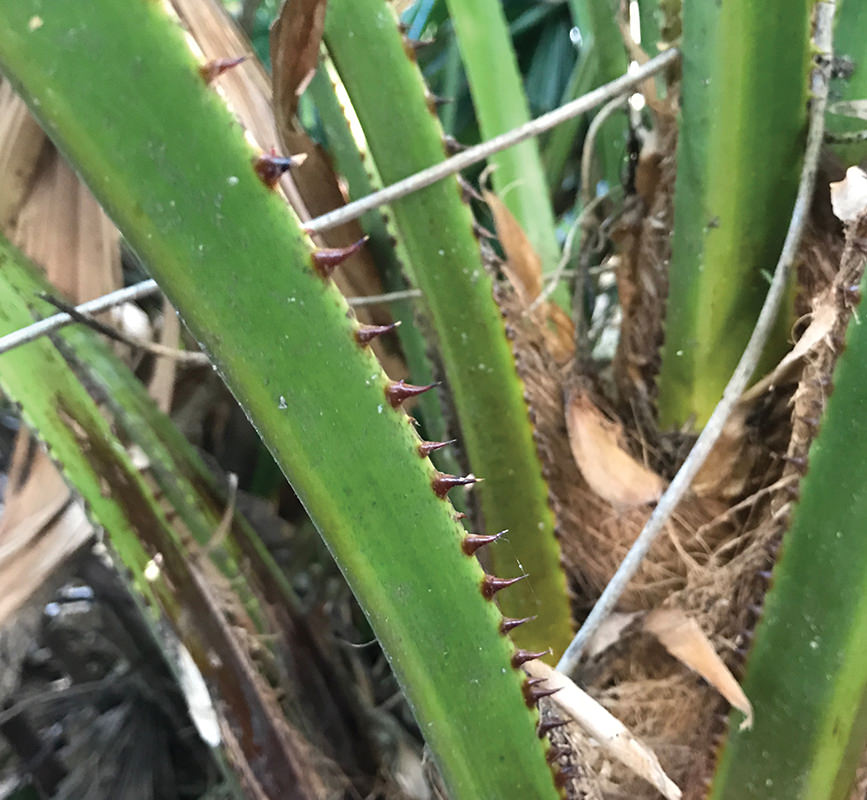
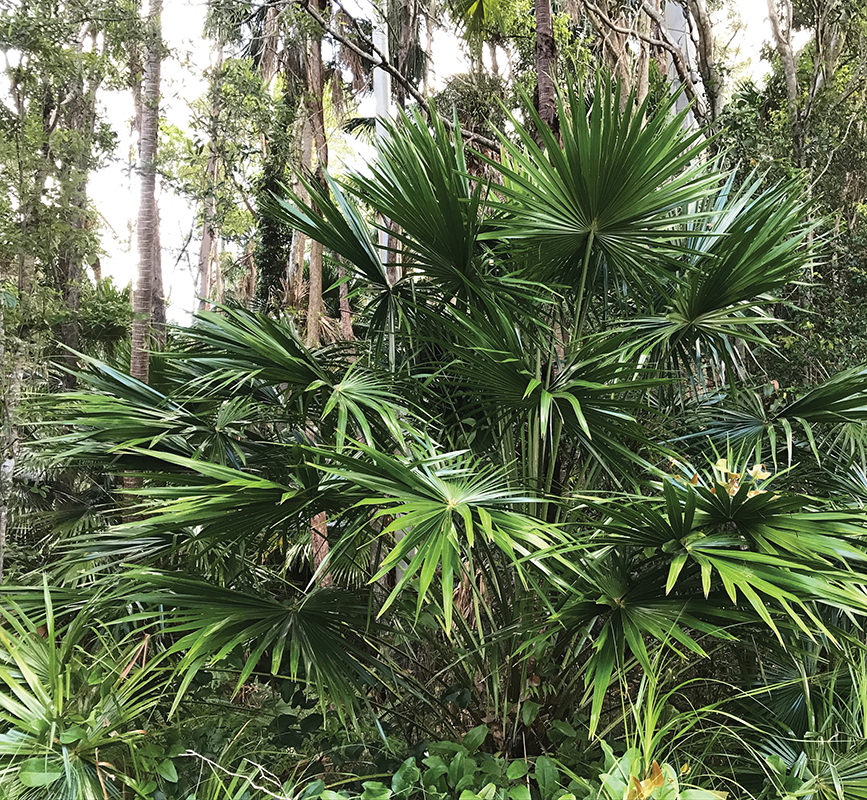
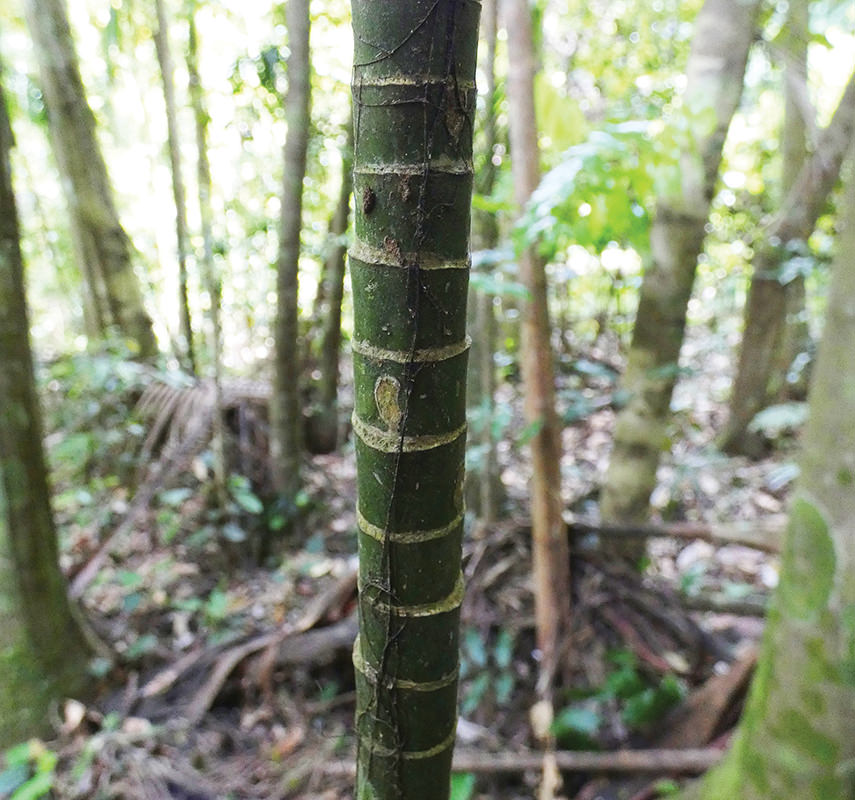
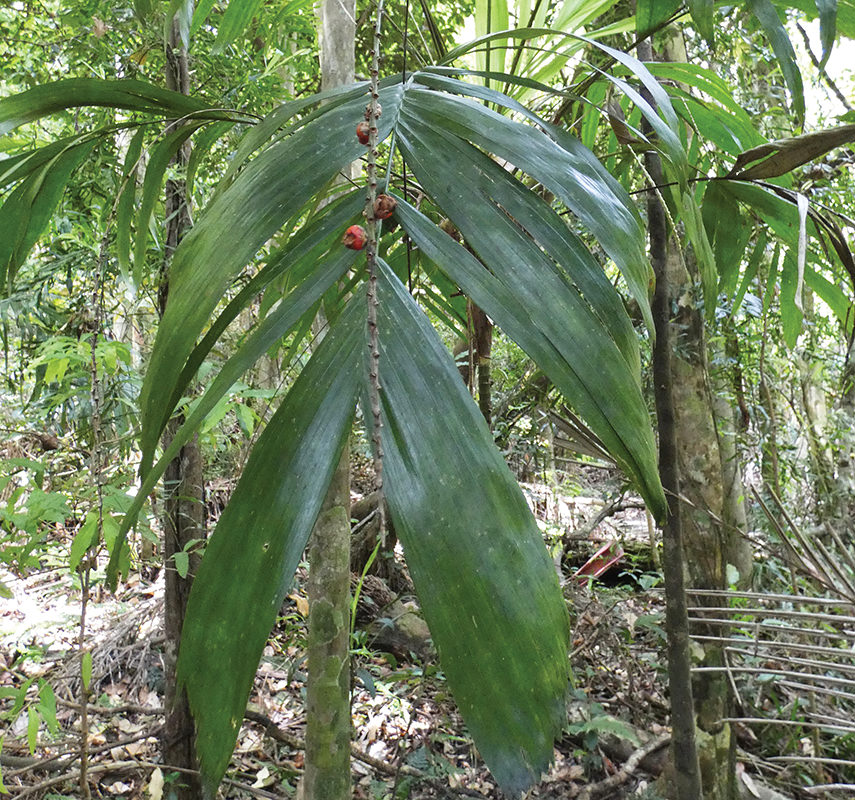

I have just read your article on the palms of South east Queensland and loved it. I live over here in the West ( Perth ) and we do have some of the same palms here, the Bangalow and the cabbage- tree to name a couple. I am encouraged to go ahead now and chance my arm at growing a few on my property in Witta. I was told by Mark Amos of the Lake Baron Catchment Care group that I was being a bit ambitious in my wish, but I will have a go.